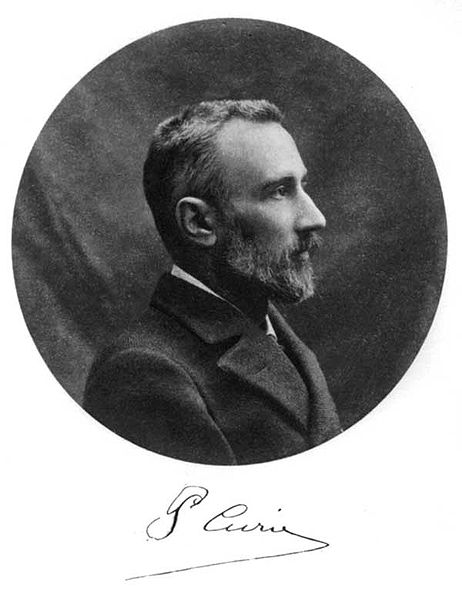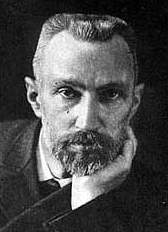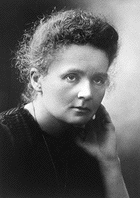<Back to Index>
- Physicist Pierre Curie, 1859
- Painter Viktor Mikhailovich Vasnetsov, 1848
- General Dimitris Koliopoulos Plapoutas, 1786



Pierre Curie (15 May 1859 – 19 April 1906) was a French physicist, a pioneer in crystallography, magnetism, piezoelectricity and radioactivity, and Nobel laureate. In 1903 he received the Nobel Prize in Physics with his wife, Maria Skłodowska-Curie, and Henri Becquerel, "in recognition of the extraordinary services they have rendered by their joint researches on the radiation phenomena discovered by Professor Henri Becquerel."
Born in Paris, France, Pierre was educated by his father, and in his early teens showed a strong aptitude for mathematics and geometry. By the age of 18 he had completed the equivalent of a higher degree, but did not proceed immediately to a doctorate due to lack of money. Instead he worked as a laboratory instructor.
In 1880, Pierre and his older brother Jacques demonstrated that an electric potential was generated when crystals were compressed, i.e. piezoelectricity. Shortly afterwards, in 1881, they demonstrated the reverse effect: that crystals could be made to deform when subject to an electric field. Almost all digital electronic circuits now rely on this phenomenon in the form of crystal oscillators.
Prior to his famous doctoral studies on magnetism he designed and perfected an extremely sensitive torsion balance for
measuring magnetic coefficients. Variations on this equipment were
commonly used by future workers in that area. Pierre Curie studied ferromagnetism, paramagnetism, and diamagnetism for his doctoral thesis, and discovered the effect of temperature on paramagnetism which is now known as Curie's law.
The material constant in Curie's law is known as the Curie constant. He
also discovered that ferromagnetic substances exhibited a critical temperature transition, above which the substances lost their ferromagnetic behavior. This is now known as the Curie point. Pierre formulated what is now known as the Curie Dissymmetry Principle: a physical effect cannot have a dissymmetry absent from its efficient cause. For example, a random mixture of sand in zero gravity has no dissymmetry (it is isotropic). Introduce a gravitational field,
then there is a dissymmetry because of the direction of the field. Then
the sand grains can ‘self-sort’ with the density increasing with depth.
But this new arrangement, with the directional arrangement of sand
grains, actually reflects the dissymmetry of the gravitational field
that causes the separation. Pierre worked with his wife Marie Curie in isolating polonium and radium. They were the first to use the term "radioactivity," and were pioneers in its study. Their work, including Marie's celebrated doctoral work, made use of a sensitive piezoelectric electrometer constructed by Pierre and his brother Jacques. Pierre and one of his students made the first discovery of nuclear energy, by identifying the continuous emission of heat from radium particles.
He also investigated the radiation emissions of radioactive substances,
and through the use of magnetic fields was able to show that some of
the emissions were positively charged, some were negative and some were
neutral. These correspond to alpha, beta and gamma radiation. The curie is a unit of radioactivity (3.7 x 1010 decays per second or 37 gigabecquerels)
originally named in honor of Pierre Curie by the Radiology Congress in
1910, after Pierre's death. Subsequently, there has been some
controversy over whether the naming was in honor of Pierre, Marie, or
both. Pierre and Marie Curie's daughter Irène Joliot-Curie and their son-in-law Frédéric Joliot-Curie were
also physicists involved in the study of radioactivity. They also were
awarded a Nobel prize for their work. The Curies' other daughter, Ève, wrote a noted biography of her mother. Their granddaughter Hélène Langevin-Joliot is a professor of nuclear physics at the University of Paris, and their grandson Pierre Joliot, who was named after Pierre Curie, is a noted biochemist. Pierre died in Paris on
19 April 1906. He tried to run across the street while it was raining,
but he slipped, and then was hit and run over by a horse drawn vehicle.
His skull was badly fractured. In April 1995 Pierre and Marie were enshrined in the crypt of the Panthéon in Paris.